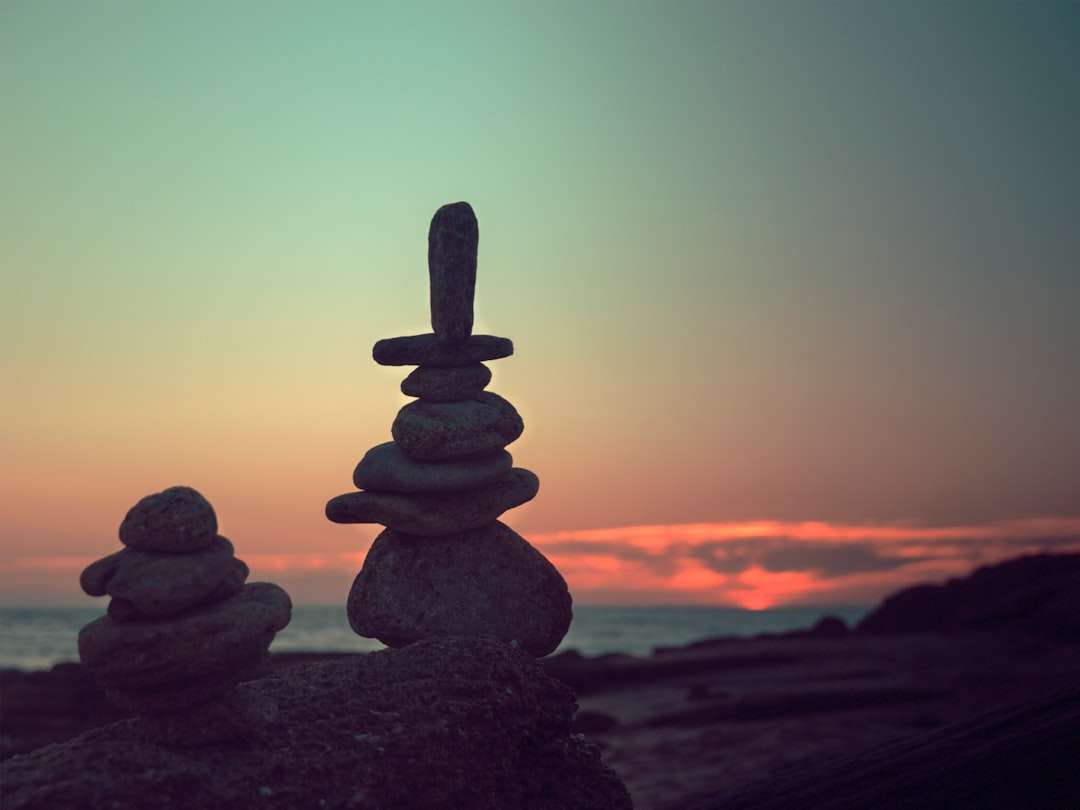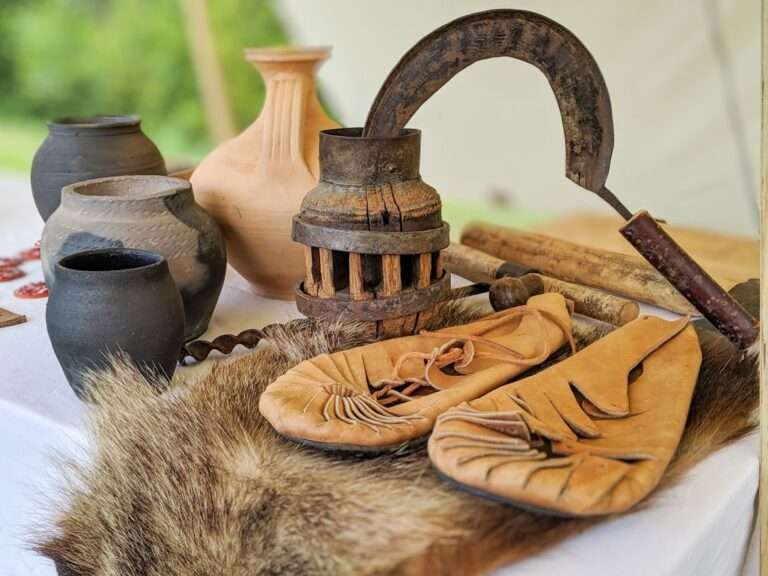How is the use of runes perceived in modern times?

Around 150 AD, the Germanic and Nordic regions of Europe saw the emergence of the rune writing system. From the Old Norse word “rún,” which means “secret” or “mystery,” comes the word “rune.”. Many Germanic tribes, including the Vikings, used the 24-letter runic alphabet known as Futhark for divination and communication.
Key Takeaways
- Runes have a rich history dating back to ancient Germanic and Norse cultures, where they were used as a form of writing and divination.
- The cultural significance of runes is deeply rooted in the spiritual and magical beliefs of ancient societies, where they were believed to hold powerful and mystical properties.
- In modern paganism, runes are used for divination, meditation, and spiritual guidance, drawing on their historical and cultural significance.
- Runes have gained popularity in New Age and spiritual practices, where they are used for healing, manifestation, and personal growth.
- Runes have made their way into popular culture, appearing in literature, movies, and video games, often associated with magic and mysticism.
- Controversies and misconceptions surrounding the use of runes include cultural appropriation, misinterpretation of their meanings, and skepticism about their effectiveness.
- The future of runes in modern society is likely to continue evolving, with their use in spiritual and self-help practices continuing to grow in popularity.
The earliest runic inscriptions, which frequently contained brief messages or identified ownership, have been found on objects like jewelry, weapons, & tools. Though its exact origins are unknown, the runic alphabet is believed to have developed from Latin and Etruscan scripts. Because runic symbols are composed of straight, angular lines, they can be carved into stone or wood. Due to their practicality, runes are perfect for writing messages on commonplace items. Old Norse, Old English, and Old High German were among the Germanic languages that adopted runes as they proliferated throughout Northern Europe.
As Christianity spread throughout the area, rune usage as a writing system decreased. They were nevertheless still used in magic & divination. The god Odin, who was supposed to have discovered the runes after hanging from the World Tree, Yggdrasil, for nine days & nights, was linked to the runic alphabet in Norse mythology. Odin is said to have imparted sacred and potent qualities to humanity after imparting rune knowledge to them.
The ancient Germanic and Nordic cultures placed greater value on runes as a result of this mythological association. Runes are still significant in culture and history today, especially for people who are interested in old Germanic and Nordic customs. The Runes’ Magical Qualities. Since Odin was regarded as the god of magic, poetry, and wisdom, the runes’ cultural significance was further enhanced by their association with the Norse god.
Runes were used for practical purposes in daily life in addition to their magical abilities. Numerous objects, such as jewelry, weapons, tools, gravestones, and more, have been discovered to bear runic inscriptions. Runes in Continual Life. Messages like the owner’s name, the object’s intended use, or words of protection were frequently expressed through these inscriptions. This kind of runic application shows how important runes were to the everyday lives of the Germanic and Nordic peoples in antiquity.
Runes’ Modern Significance. For individuals who are drawn to the ethereal qualities & antiquated roots of runes, they still have cultural meaning today. Runes are still widely used in magic and divination, with many people looking to the symbols for wisdom and insight. Since runes are frequently portrayed as strong, enigmatic symbols with connections to magic and ancient wisdom, their cultural significance is also apparent in contemporary popular culture. Runes remain an integral part of the cultural heritage of the Germanic and Nordic peoples, whether they are utilized for spiritual purposes or are just valued for their historical significance. Runes are frequently used in contemporary paganism as a tool for spiritual guidance and divination.
Numerous practitioners of Pagan philosophy maintain that the runic symbols are filled with ancient wisdom and can offer insight into a variety of life aspects, such as relationships, careers, and personal development. Runestones are cast or drawn, and their meanings are deduced from their arrangement and correlation with each other in the process of runic divination. On particular queries or concerns, this process is thought to offer direction and clarification. Runic usage in contemporary paganism is frequently associated with the resurgence of antiquated Germanic and Nordic customs. The mythology and folklore of these cultures serve as a source of inspiration for numerous Pagan practitioners who aim to establish a connection with their ancestral roots.
For these people, using runes is a way to respect their heritage and ask their ancestors’ wisdom for guidance. Runes are employed in rituals & spellwork within contemporary Pagan traditions in addition to divination. The symbols are thought to possess magical abilities that can be used for manifestation, healing, and protection. Runes are a symbol of modern paganism’s profound respect for the antiquated customs and beliefs of the Germanic and Nordic peoples.
Working with runes is a popular method for practitioners to seek guidance from the wisdom of the past and establish a connection with their ancestors’ spiritual practices. In contemporary Pagan circles, runes remain a vital tool for spiritual development and establishing ties to past customs, regardless of their application in divination or magic. Runes are employed in New Age and spiritual practices in addition to contemporary paganism.
Due to runes’ mystical qualities and ancient origins, many people who are drawn to alternative forms of spirituality find them appealing. Runes are frequently used as a tool for spiritual guidance, personal development, and self-discovery in New Age circles. The symbols are thought to contain universal truths and to offer insight into a person’s deepest desires and thoughts. Runic divination has grown in popularity among people looking for spiritual direction outside of established religious contexts.
Numerous individuals resort to runes in order to obtain understanding of life’s obstacles or guidance regarding significant choices. Drawing or casting runes is regarded as a means of connecting with higher spiritual forces and developing one’s intuition. Working with runes is an intensely personal & contemplative activity that helps some people discover more about themselves and their inner selves. Runes are employed in New Age and spiritual communities not only for divination purposes but also for mindfulness exercises and meditation. The symbols are frequently utilized as focal points for reflection or as part of guided visualizations. Many people discover that practicing runes can support them in developing a sense of spiritual connectedness and inner serenity.
Runes continue to be valued by people seeking spiritual growth and insight outside of traditional religious frameworks, whether they are used for divination or personal reflection. Runes have a cultural significance that goes beyond spiritual & religious activities and has permeated popular culture. Runes are frequently portrayed as potent symbols with connections to magic and old wisdom in literature, movies, and television. They are commonly utilized as components of mystical worlds or as plot devices in fantasy literature.
Runes are frequently connected to mystery, strength, and old wisdom in popular culture. J is one famous instance of a rune from popular culture. R.
R. Dwarven runes are an important part of the plot in Tolkien’s “The Lord of the Rings” series. Runes are portrayed in these books as a type of writing that the dwarves use to mark their possessions and record important information. Runes have become associated with fantasy literature and have gained popularity as representations of age-old wisdom because of the use of these symbols in Tolkien’s writings.
Runes are not just found in literature; they are frequently used as components of mystical or magical rituals in a variety of movies and TV series. They are usually portrayed as spellcasters’ and diviners’ tools, or as symbols with deeper meanings. Runes are widely regarded as enigmatic and potent symbols, which is partly due to this representation.
Runes’ enduring appeal as representations of magic and ancient wisdom is reflected in their cultural significance in popular culture. Runes continue to captivate audiences worldwide, whether they are employed as mystical world components or as plot devices in fantasy literature. False beliefs & improper application. Because some Nazi organizations used runes in the past, a common misconception about them is that they are only connected to groups that support white supremacist ideology. This connection has made many people distrustful of runes and given rise to common misconceptions about their actual purpose. A Rich Cultural Heritage.
Runes have a rich cultural history, despite some extremist groups misusing them. The symbols have deep meaning in the mythology and folklore of the Germanic & Nordic peoples, & they have been an essential part of their cultural heritage for centuries. It is crucial to understand that extremist groups’ misapplication of runes does not accurately represent their actual cultural or spiritual significance.
Respect and cultural appropriation. Cultural appropriation is a topic of controversy in relation to the use of runes. Given their cultural significance within these particular traditions, some contend that people who are not Germanic or Nordic should not use runes. Regarding honoring cultural legacy & comprehending the roots of spiritual practices, this discussion brings up some crucial issues. Understanding the Runes’ True Significance.
It’s crucial to understand that, despite these disputes and misunderstandings, many individuals find great cultural significance in runes because of their esoteric roots & mystical qualities. We may recognize the significance of runes without fostering false beliefs if we are aware of their actual history and cultural setting. Runes will undoubtedly continue to be important in contemporary society as we move forward.
As enduring representations of magic and wisdom, they will always have a significant role in spiritual practices, popular culture, and cultural heritage. For divination, self-discovery, and spiritual development, runes will remain valuable tools in contemporary Paganism, New Age practices, and alternative spirituality movements. Many people will keep looking to these archaic symbols for direction as they face obstacles in life and strive for a better understanding. We can anticipate seeing runes portrayed in popular culture as potent symbols connected to magic and old knowledge. Runes will never go out of style—they are a compelling visual element that works well in television, movies, and literature.
It’s critical that we proceed with the use of runes while honoring their historical and cultural significance. We can make sure that they are appreciated for their rich history without fostering damaging misunderstandings by knowing their real origins and significance. In conclusion, runes have a rich cultural heritage & a lengthy history spanning several centuries for a large number of people worldwide. Their ethereal qualities and ageless roots will always make them valuable, whether they are incorporated into spiritual rituals or portrayed in popular culture. We may appreciate the enduring appeal of these potent symbols without spreading false beliefs if we are aware of their actual history and cultural background. Runes will undoubtedly continue to play a significant role in popular culture, spiritual practices, & cultural heritage in contemporary society, as we move forward.
FAQs
What are runes?
Runes are the letters in a set of related alphabets known as runic alphabets, which were used to write various Germanic languages before the adoption of the Latin alphabet.
How are runes perceived in modern times?
In modern times, runes are often perceived as a form of divination or as a tool for self-discovery and personal growth. Some people also use runes for meditation and spiritual guidance.
Are runes associated with any specific religion or belief system?
Historically, runes were used by various Germanic peoples who practiced different forms of paganism. In modern times, runes are often associated with Norse mythology and the revival of Norse paganism, but they are also used by individuals from diverse spiritual and religious backgrounds.
Can anyone use runes, or is it reserved for a specific group of people?
There are no specific restrictions on who can use runes. In modern times, anyone with an interest in the history and symbolism of runes can learn to use them for divination, meditation, or personal reflection.
Are there any controversies surrounding the use of runes in modern times?
Some controversies have arisen around the use of runes in modern times, particularly in relation to cultural appropriation and the misuse of runic symbols by extremist groups. It is important to approach the use of runes with respect for their historical and cultural significance.





